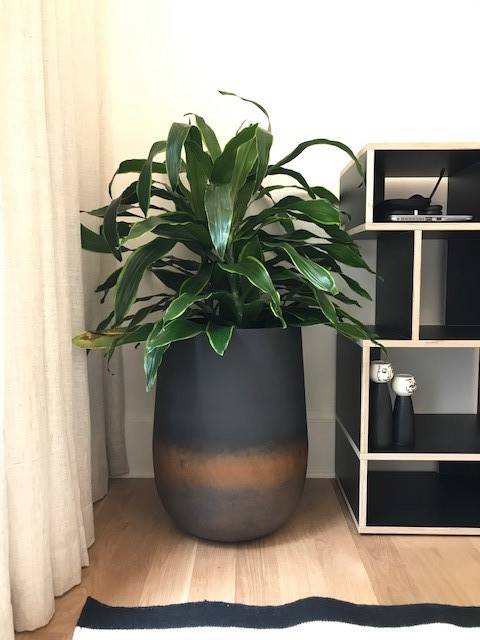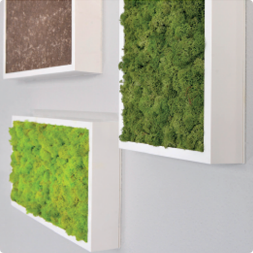Your Complete Guide to Janet Craig Plant Care
The Dracaena Janet Craig, not to be confused with the dietary Jenny Craig, has been praised as one of the most popular houseplants for decades- and for good reason! These African natives thrive with little attention, low-light settings, and infrequent waterings, making them the unfussy roommate you’ve always dreamed of. The Janet Craig, sometimes referred to as “JC” in the Plantz community, spruces up any room with its sword-shaped, dark green leaves that make even the most uninviting corner stand out. Whether your thumb is green or brown, this low-maintenance classic is a must-have addition to your plant collection.
The Janet Craig is an incredibly versatile little number, coming in three different flavors that offer the right combination of size, shape, and color to fit whatever space you plan on transforming. Here at Plantz we offer various pot sizes for your JC, along with the option of your new plant coming in “bush” or “cane” form- bush being shorter and fuller, while cane is taller and more slender. If the classic green-leaf cultivar isn’t calling your name or you’re looking for a pop of color, the JC Carmen and Limelight are relatives that have all the same low-maintenance characteristics while offering hints of bright yellow to liven up the mood.
*Fun fact: NASA lists the JC as one of the top clean air plants for its ability to remove harmful toxins from the environment that it’s in!
Even though the JC plant requires such little attention that killing it would actually be rather hard, it still needs some love if it’s going to live a long and happy life. So, let’s dive into Janet Craig plant care and cover all of the basics for even our newest plant parents.
Watering Your Janet Craig
When it comes to watering, your Janet Craig will thrive living on the dryer side. Be sure to let the soil dry out between doses of H2o, and when in doubt- do not water! While the JC can tolerate a few missed waterings, it is far less forgiving when it comes to over-watering which causes the dreadful root rot. We highly recommend investing in a soil probe like our Soil Sleuth, which is a handy tool that takes the mystery out of when you should actually be watering your plants. Instead of relying on the finger test, a soil probe quite literally gets to the root of the situation and gauges exactly what the soil moisture level is- so you don’t have to take any chances when it comes to your beloved plant friends.
As if the JC wasn’t easy enough to care for, its minimal need for watering makes it a perfect candidate for utilizing a sub-irrigation system. One such as the PlantAssure sub-irrigation system creates a reservoir that your plant can absorb water from when it’s good and thirsty, reducing the risk of your new plant becoming overwatered and putting you at ease. These systems are perfect for those plant parents who are always zipping from meeting to meeting, or busy traveling the world, and worry about leaving their plant babies home alone. Plus, the sub-irrigation system goes below the grow pot so you won’t even realize it’s there! Efficiency AND aesthetics- what more can you ask for?
*Helpful tip: water your Janet Craig with filtered water, or let the water sit out for 24 hours, to eliminate the fluoride found in tap water and avoid leaf damage!
Along with proper watering techniques, it’s important to talk about the nutrition and growth of your Janet Craig. We ship all of our plants already fertilized, so your new plant buddy doesn’t need to be fed for the first 6 months. After that, it’s a good idea to check out our indoor plant fertilizer and feed your JC once every 3 months or so.
Whatever you do, it’s crucial NOT to remove your new plant from the plastic grow pot it was raised in as it can cause damage to the plant. Simply find a slightly bigger pot that matches the style you’re going for and put the grow pot right in! It couldn’t be any easier if we tried.
Keeping Your Janet Craig in the Right Light
When we say this is probably the most low-maintenance plant we offer, we’re not kidding. The Janet Craig’s large green leaves capture even the slightest bit of light, making it our most low-light plant in the stockroom. This makes them an ideal choice for offices, bedrooms, or bathrooms that mostly offer artificial light. While the JC prefers a shaded environment, it will do better and last longer with at least some moderate sunbeams. Be sure to never expose this plant to direct sunlight as it can scorch its delicate leaves!
You should also always rotate your plants, as it is vital to ensure growth is happening on all sides. Rotating your Janet Craig so each side is getting equal light guarantees that it will be more symmetrical and mirrorlike, allowing it to grow to its fullest potential.
This plant’s long, strappy leaves tend to be a nursery for dust, but thankfully they are quite easy to clean. All you have to do is wipe the leaves with a wet cloth and they will be radiating again in no time! Your JC may develop a slight Mealybug problem, and while they can be pesky- do not fret. With the power of a light, soapy solution and a spray bottle, these white cottony bugs will be gone as quickly as they appeared.

What Temperature Should Your JC Plant Be Kept At?
Similar to humans, the Janet Craig prefers temperatures between 65°F and 85°F. These plants do not do well in temperatures below 55°F, with their growth slowing down as a result. If you’re a plant parent who lives anywhere that it snows, make sure to keep this plant out of cold drafts and away from heaters in the winter as they can damage their leaves. A good rule of (green) thumb is if you feel comfortable indoors, then your Janet Craig will also be feeling good.
While the Dracaena Janet Craig is usually listed as a non-poisonous houseplant, some cats and dogs have experienced discomfort after gnawing on the leaves. Just to be safe, keep this plant away from your pets and be cautious if they do happen to sneak a leaf or two.


















